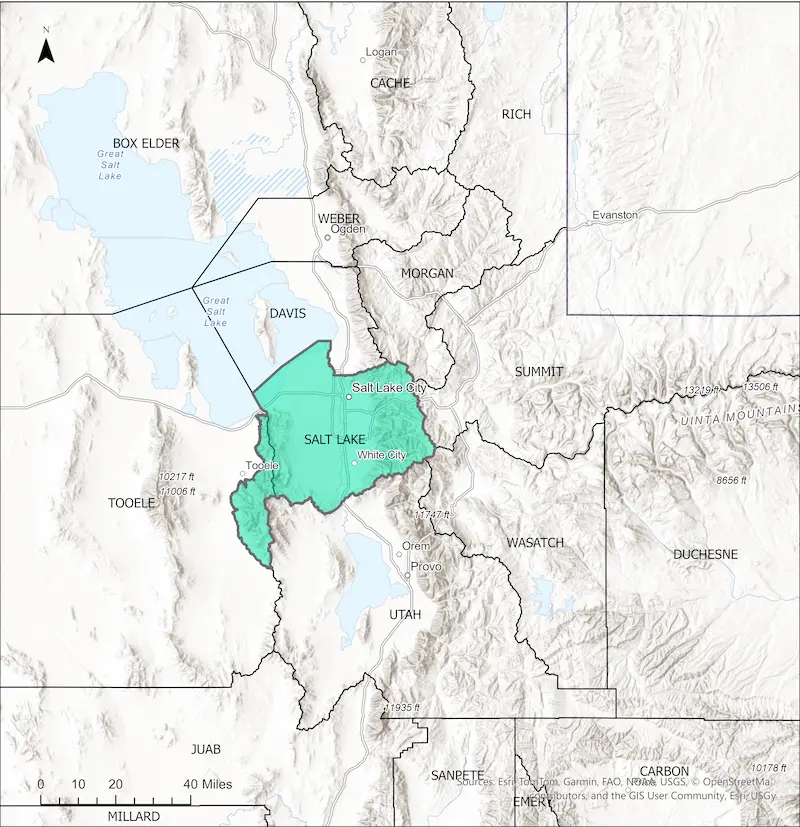Sulfur dioxide (SO₂) is a colorless gas that smells like rotten eggs. It mainly comes from burning fuels that contain sulfur, such as coal, oil, and natural gas. When these fuels burn, the sulfur reacts with oxygen to form sulfur oxides (SOx). SO₂ is the most common form of SOx and is often measured to indicate overall SOx levels in the air. For more general information about sulfur dioxide, visit the EPA’s Sulfur Dioxide page.
Why SO₂ matters
Exposure to SO₂ can irritate your respiratory system and is especially dangerous for people with breathing problems like asthma or chronic bronchitis. In the air, SO₂ can also combine with other substances to create fine particulate matter (PM2.5), which can cause even more health issues. SO₂ also contributes to acid rain, forming sulfuric acid when it mixes with water and other chemicals in the atmosphere. Acid rain harms the environment by making lakes and streams acidic, damaging forests, and even corroding buildings.
Reducing SO₂ emissions
Industrial facilities like power plants control SO₂ emissions by ‘scrubbing’ (removing) the gas from exhaust or by taking sulfur out of the fuel before it’s burned. You can help reduce SO₂ by:
- Limiting your electricity use.
- Turning off unused electronic devices.
- Using more energy-efficient appliances and alternative energy sources.
To understand how sulfur dioxide fits into the broader context of air quality in Utah, read our ‘Understanding Utah’s Air Quality’ article.
Understanding sulfur dioxide air quality standards
The Clean Air Act (CAA) requires the Environmental Protection Agency (EPA) to review and update air quality standards every five years. These standards, known as National Ambient Air Quality Standards (NAAQS), protect public health and the environment using the latest science.
There are two main types of NAAQS:
- Primary standards: Protect public health, especially sensitive groups.
- Secondary standards: Protect public welfare, including visibility, animals, crops, and buildings.
For a detailed history of SO₂ NAAQS, explore the EPA’s Sulfur Dioxide Standards page.
Standard status
1971 sulfur dioxide standard
In 1971, the EPA set two key SO₂ standards:
- 24-hour average: 0.14 parts per million (ppm). This means the average SO₂ level over any 24-hour period should not exceed this limit more than once per year.
- Annual average: 0.030 ppm.
Utah’s history with the 1971 standard
During the 1970s, SO₂ levels in Utah, particularly around Magna, often exceeded the 24-hour standard. This led to Salt Lake County and parts of eastern Tooele County (above 5,600 feet) being designated as ‘nonattainment’ areas, meaning they did not meet the federal air quality standard.
Utah’s air quality has significantly improved since then, thanks to major emission reductions. For example:
- Kennecott, a large industrial facility, spent nearly a billion dollars on upgrades that led to consistent compliance with the SO₂ standard by 1981.
- In the mid-1990s, Kennecott, Geneva Steel, and local refineries further reduced SO₂ emissions to address other pollution issues, including PM10 (another type of particulate matter).
- Kennecott also closed several coal-fired power plant units in 2016 and 2019, further cutting SO₂ emissions.
Despite these improvements, an official change to Utah’s ‘nonattainment’ status for the 1971 standard has been complex. While Utah submitted a plan to the EPA in 2005 to show compliance and remove the nonattainment designation, this request was withdrawn in 2019 due to changes in emissions and air quality modeling. The Division of Air Quality (DAQ) is currently working with the EPA to finalize a new plan to officially address the 1971 standard.

2010 sulfur dioxide standard
In 2010, the EPA updated the primary SO₂ standard to 75 parts per billion (ppb). This standard is based on the average of the highest hourly SO₂ readings over a three-year period.
On November 1, 2016, Governor Herbert recommended to the EPA that all areas of Utah meet this new 2010 SO₂ standard based on local monitoring and air quality models. The EPA officially agreed with this recommendation on January 9, 2018. As a result, all areas of Utah were designated as either ‘attainment’ (meaning they meet the standard) or ‘unclassifiable’ (if there wasn’t an SO₂ monitor in that specific area).
The chart below shows how Utah’s SO₂ monitor values compared to the 2010 primary standard of 75 ppb:

2024 sulfur dioxide standard
On December 10, 2024, the EPA updated the secondary SO₂ standard. Previously, this standard was a 3-hour average of 0.5 ppm (500 ppb) that could not be exceeded more than once per year. The new secondary standard is an annual average of 10 ppb, based on a three-year average. Read the official final rulemaking for this change on EPA’s page.
Utah’s progress toward the 2024 standard
On September 3, 2025, the State of Utah submitted its designation recommendation for the 2024 secondary SO2 standard to the EPA. A copy of the final submission can be found here.
Analysis of the design value shows that all counties in Utah are in attainment or are “unclassified” (meaning no monitor is present) for the 2024 revised standard. Please note that this recommendation does not include Tribal Lands, as the State does not have authority over those areas.
Contact
For more information contact:
Tasnuva Islam
